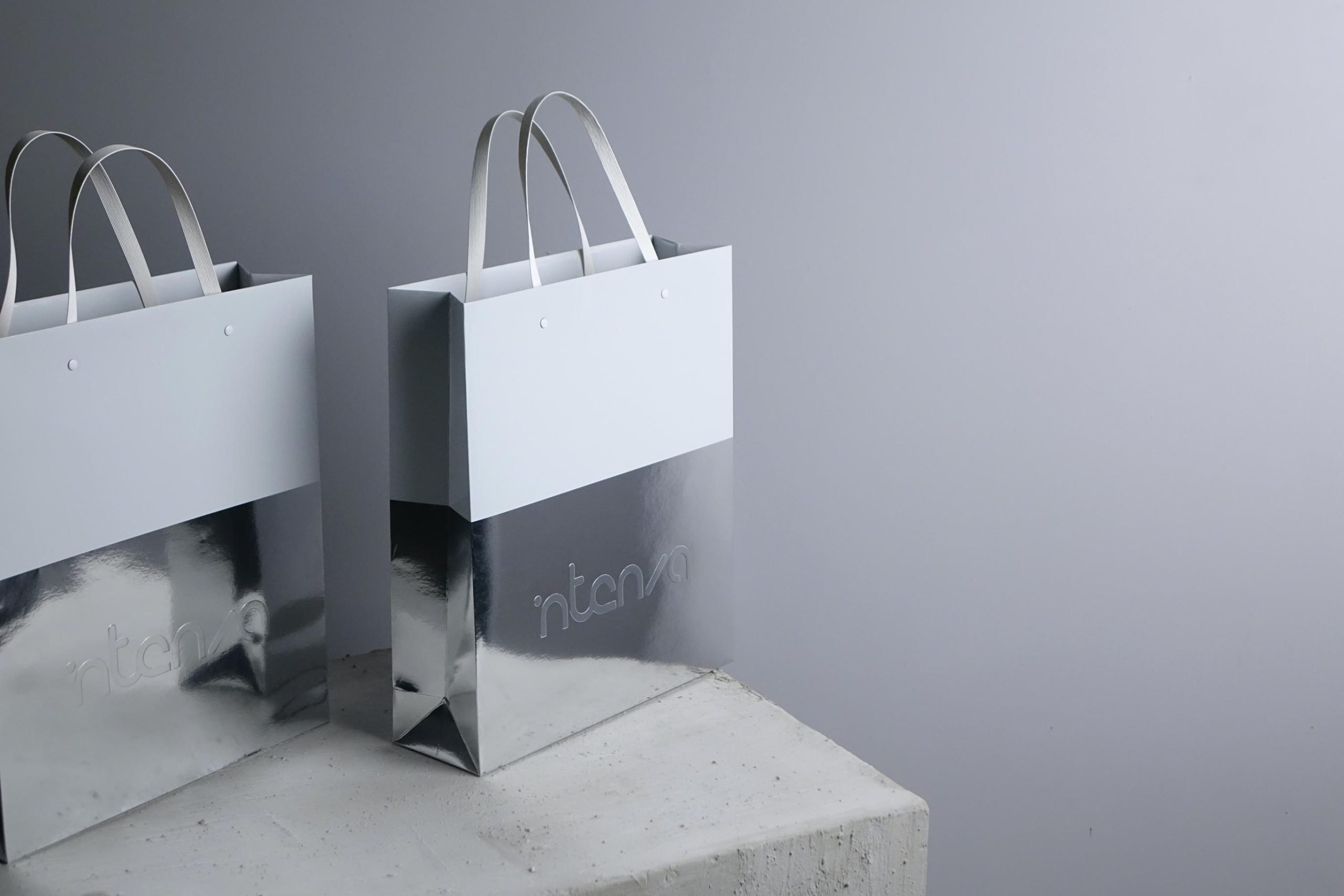When it comes to children’s fashion, the value of durability cannot be overstated. As parents, we all know too well how quickly our children can grow out of clothes or wear them out with just a few wears. This is why investing in high-quality, durable clothing for our little ones is so important.
Not only does it save us money in the long run, but it also minimizes our impact on the environment by reducing waste. This blog will explore why durability should be a top priority when shopping for children’s fashion, and provide tips on how to identify durable clothing options.
So let’s dive in and discover the value of durability in children’s fashion!
Importance of Durability in Children’s Fashion
When it comes to children’s fashion, durability is an essential factor to consider. Clothing items for children must be designed to withstand the rough-and-tumble play, stains, spills, and the regular wear and tear. Buying items that can be worn and washed repeatedly can save time, money, and hassle in the long-term.
Clothing items that do not last long can result in frequent replacements, which can significantly increase expenses and contribute to environmental waste. Therefore, choosing high-quality, durable children’s fashion items can be a game-changer for parents who value quality and adaptability in their children’s wardrobes.

Longevity of Clothing
The longevity of children’s clothing is crucial for parents who want to make the most out of their purchases. Quality clothing designed with materials that can withstand daily wear and tear is one way to ensure that children can enjoy their outfits for more extended periods.
It means that parents do not have to worry about replacing clothing items frequently, and children can continue to wear their favorite outfits for years.
Moreover, buying durable clothes can also mean that parents can hand them down to their younger children, further reducing expenses and contributing to environmental sustainability.
Impact on the Environment
When parents choose to invest in durable clothing for their children, they are making a conscious effort to contribute to the environment’s sustainability.
It means that fewer clothing items will end up in landfills, and the demand for new clothing production and materials will reduce. Children’s fashion brands are also starting to recognize the critical role they play in reducing environmental waste and have started incorporating eco-friendly materials into their production processes. By being mindful of the materials used in children’s fashion, we can make a difference in creating a more sustainable future for the planet.
Conclusion
The value of durability in children’s fashion cannot be overstated. It is an essential factor to consider when buying clothing for children because it ensures that parents can get the most out of their investments.
Durable clothing items are designed to withstand the daily wear and tear that comes with children’s play and activities. Additionally, buying durable clothes can promote sustainability and reduce environmental waste.
Therefore, investing in high-quality, durable children’s fashion items is a smart choice for parents who value comfort, style, and longevity in their children’s wardrobes.
CostEffective
One of the most significant advantages of buying durable children’s fashion is cost-effectiveness. While quality clothing may come with a higher price tag, it can save parents money in the long run.
Parents won’t have to replace clothing as frequently when it’s made to last.
Parents can also save money by handing down durable clothing items from older children to younger siblings, further reducing expenses. Additionally, some brands offer lifetime warranties on their products, giving parents peace of mind knowing that they won’t have to pay for costly replacements or repairs.
So, while it may seem like a more expensive option upfront, investing in durable children’s clothing can ultimately save parents money and contribute to a more sustainable future for the planet.
Environmental Sustainability
The fashion industry is notorious for its negative impact on the environment. However, by investing in durable children’s fashion, parents can play their part in reducing the industry’s environmental impact.
When parents buy clothing made to last, they reduce the amount of clothing that ends up in landfills. Durable clothing also requires less energy and resources to produce, reducing the carbon footprint of the fashion industry.
By teaching children the value of durability and the importance of caring for their clothing, parents can instill sustainable habits that extend far beyond their childhood years.
With the increasing urgency of addressing climate change, every small action counts, and buying durable children’s fashion is a simple yet impactful step towards a more sustainable planet.
Quality Materials for Durable Clothing
Children are known for their active lifestyles, and their clothing needs to keep up with them. As such, investing in high-quality materials for durable children’s fashion is crucial.
Quality materials such as organic cotton, hemp, and linen are not only long-lasting but also environmentally friendly.
These materials are grown and processed in ways that minimize harm to the environment, making them a great choice for parents who want to leave a positive impact on the planet.
Not only do these materials last longer, but they also maintain their quality over time, ensuring that children’s clothing remains in great condition despite endless washes and wears.
Additionally, high-quality materials often result in more comfortable clothing, promoting better wear and fewer complaints from children.
When it comes to children’s fashion, quality materials are worth the investment.

Material Options
When it comes to durability in children’s fashion, there are many material options to choose from. Organic cotton is a popular choice, known for its softness and strength. It is also hypoallergenic, making it perfect for children with sensitive skin.
Hemp is another durable material that is environmentally sustainable and resistant to bacterial growth. Linen is a breathable and lightweight option that becomes softer with every wash, making it a great choice for warm weather.
Whatever material you choose, opting for high-quality and durable fabrics will save you money in the long run and provide your child with comfortable and long-lasting clothing.
Benefits of Each Material
When it comes to choosing materials for your child’s clothing, durability is just one factor to consider. Organic cotton, for example, is not only strong and soft, but it is also free from harmful chemicals and pesticides. Hemp, on the other hand, is durable and sustainable, making it a popular choice for eco-conscious parents.
Linen is a breathable and lightweight option that is perfect for hot summer days, allowing your child to stay cool and comfortable. By choosing materials that are both durable and beneficial for your child, you can ensure that your child’s clothing is of high quality and safe for them to wear.
Factors to Consider for Material Durability
When shopping for children’s clothing, it’s important to consider the durability of the materials used. Look for fabrics that are strong and resilient, able to withstand the wear and tear of daily play and activity. Also, consider factors such as colorfastness and stain resistance, as well as ease of care and maintenance.
Materials that can be machine-washed and dried without losing their shape or color are ideal for busy parents. By choosing durable materials, you can ensure that your child’s clothing lasts longer and can be passed down to younger siblings or even donated to others in need.
Design Choices for Durable Clothing
Aside from material durability, design choices also play a key role in creating clothes that can withstand the test of time. Look for sturdy construction, such as reinforced seams and hems, to prevent tearing and fraying. Opt for clothing with practical features, such as pockets and adjustable waistbands, that can adapt to your child’s changing needs and activities.
Choose classic styles over trendy ones, as classic designs are less likely to go out of style and can be worn for more occasions. Also, look for clothes with gender-neutral designs or colors, which can be worn by multiple children and don’t limit hand-me-down options.
Overall, selecting durable materials and well-designed clothing not only saves money in the long run but also promotes sustainability by reducing waste and increasing the lifespan of clothes.

Simple and Timeless Designs
When it comes to children’s fashion, durability should be a top priority. Kids play hard and go through clothes quickly, but investing in high-quality, durable clothing can save parents money and reduce waste.
To achieve durability, material choice is key- opt for strong and sturdy fabrics like denim, canvas, and wool that can stand up to wear and tear. However, design choices also play a crucial role in creating long-lasting clothing. Look for clothing with practical features, like reinforced seams and adjustable waistbands, to accommodate your child’s changing needs.
Classic, timeless designs are also a smart choice, as they are less likely to go out of fashion and can be passed down or reused for multiple siblings. By choosing durable materials and thoughtful designs, parents are investing in sustainability and their child’s comfort and style.
Reinforcements in HighStress Areas
One of the most important aspects of durable children’s clothing is reinforcement in high-stress areas. Knee patches on pants, extra layers of fabric at the elbows, and reinforced stitching on hems and cuffs are all examples of thoughtful design choices that can significantly extend the lifespan of a garment.
Children tend to wear through clothes quickly in areas where there is a lot of friction or stretching, so reinforcing these areas is crucial to ensure that the clothing holds up over time.
When shopping for children’s clothing, be sure to examine the construction and look for reinforced areas to ensure that you are getting the most durable option available.
Reinforcing high-stress areas not only extends the life of the garment but also reduces waste and promotes sustainable fashion practices.
Value for Money
While investing in high-quality, durable children’s clothing may require a larger upfront cost, it ultimately provides better value for money in the long run.
Parents who choose to purchase cheaper, lower quality clothing may find themselves frequently replacing items as they wear out or become damaged. This constant cycle of buying and discarding clothing not only adds up to a larger total cost but also contributes to the growing problem of textile waste in landfills.
Durable clothing holds up better to frequent use and washings, meaning parents can feel confident in their investment and avoid constantly replacing items. Additionally, if parents choose to donate or sell clothing once their child has outgrown it, durable options will typically retain more value and have a greater resale potential than low-quality items.
In conclusion, the value of durability in children’s fashion cannot be overstated. By opting for high-quality materials, thoughtful design choices, and reinforced construction, parents can save money, reduce waste, and provide their children with comfortable, long-lasting clothing options.
Adjustable Features for Extended Wear
In addition to reinforcing high-stress areas, adjustable features are another important aspect of durable children’s clothing. Items like elastic waistbands, adjustable straps, and expandable cuffs can all extend the lifespan of a garment by allowing it to grow with the child.
Children grow quickly, and it can be frustrating to invest in an item of clothing that will only fit for a short period of time.
However, by choosing clothing with adjustable features, parents can maximize their investment and ensure that the garment will last longer.
Adjustable features also have the added benefit of providing added comfort and flexibility for children as they move and play.
Overall, by prioritizing durability and adjustability when it comes to selecting children’s clothing, parents can save money, reduce waste, and provide their children with clothing that is both comfortable and long-lasting.
Tips for Maintaining Durable Children’s Clothing
Durability is a critical aspect when selecting children’s clothing. The value of durable clothing goes beyond financial savings to practicality and convenience. As a parent, you want clothing for your child that can withstand the rough and tumble of play, frequent washing, and frequent rough handling.
Apart from seeking high-quality material, reinforcing high-stress areas, and selecting adjustable features, there are essential tips that parents can use to maintain their child’s clothes. For instance, parents can prevent stains by ensuring that their children eat away from their clothes or use bibs for younger children.
Washing clothes in cold water and avoiding dryers can also help prevent shrinkage and ensure that the material retains its color and overall appearance. Additionally, making minor repairs, such as re-sewing a button, can help extend the life of a garment and save money in the long run.
Ultimately, parents should approach purchasing children’s clothing with durability in mind, and prioritize selecting quality materials and features that will stand up to daily wear and tear.

Proper Washing Techniques
Washing durable children’s clothing is not just about throwing it in the machine with some detergent. It requires some attention to details to ensure that the clothes remain in good condition for an extended period. One of the key tips for washing durable children’s clothing is to always read the care label.
The care label contains instructions on the best washing techniques for that particular garment.
Another important technique is to sort clothes by color and fabrics.
This prevents color bleeding and damage to delicate fabrics. It is also essential to avoid using too much detergent or fabric softeners, as they can weaken the fabric over time.
Using a mild detergent and washing clothes in cold water is also recommended.
Hot water can damage the fibers in the fabric, diminishing its strength and overall durability. Additionally, avoiding the dryer can also extend the life of a garment.
Drying clothes on a line or rack can help prevent shrinkage and maintain the fabric’s original shape.
In conclusion, proper washing techniques are vital to maintain durable children’s clothing. Following the care instructions on the label, sorting clothes, using mild detergents, washing in cold water, and avoiding dryers are all essential tips for parents to ensure that their child’s clothes stay durable and long-lasting.
Storage and Organization
Proper Washing Techniques
Washing durable children’s clothing is not just about throwing it in the machine with some detergent. It requires some attention to details to ensure that the clothes remain in good condition for an extended period. One of the key tips for washing durable children’s clothing is to always read the care label.The care label contains instructions on the best washing techniques for that particular garment. Another important technique is to sort clothes by color and fabrics.
This prevents color bleeding and damage to delicate fabrics. It is also essential to avoid using too much detergent or fabric softeners, as they can weaken the fabric over time. Using a mild detergent and washing clothes in cold water is also recommended.
Hot water can damage the fibers in the fabric, diminishing its strength and overall durability. Additionally, avoiding the dryer can also extend the life of a garment.
Drying clothes on a line or rack can help prevent shrinkage and maintain the fabric’s original shape. In conclusion, proper washing techniques are vital to maintain durable children’s clothing. Following the care instructions on the label, sorting clothes, using mild detergents, washing in cold water, and avoiding dryers are all essential tips for parents to ensure that their child’s clothes stay durable and long-lasting.
Storage and Organization
Proper storage and organization of children’s clothing can also contribute to its durability. Rather than stuffing clothes into a drawer, hanging them on hangers or neatly folding them can prevent wrinkles and creases.Organizing clothes by type, such as separating shirts and pants or dresses and skirts, can also help keep them in good condition. Storing clothes in a dry, cool, and dark place can help prevent fading and damage caused by sunlight and moisture. Additionally, periodically going through your child’s clothing and donating items that they have outgrown or no longer wear can prevent clutter and help you keep track of what they need. By properly storing and organizing children’s clothing, parents can extend the life of items and save money in the long run.
Repurposing and Upcycling Clothing
When it comes to durable children’s fashion, repurposing and upcycling clothing is another great way to extend the life of garments. Instead of throwing away a garment that no longer fits or is damaged, try finding creative ways to give it new life. For example, old t-shirts can be turned into cleaning rags or transformed into a new piece of clothing with a little creativity and sewing skills.
Items like jeans that are too short can be cut into shorts or cropped pants for the summer months. This not only saves money, but it also teaches children the value of reusing and repurposing, a lesson that can carry over into other aspects of their lives.
By repurposing and upcycling clothing, parents and children can extend the life of their clothes while reducing waste and helping the environment.
In conclusion, the value of durability in children’s fashion goes beyond just saving money. It teaches children the importance of taking care of their belongings, reusing and repurposing items, and making sustainable choices.
By following proper washing techniques, storing and organizing clothes, and repurposing garments that no longer serve their original purpose, parents can help their children look great, feel comfortable, and make a positive impact on the world.
The Future of Durability in Children’s Fashion
Repurposing and Upcycling ClothingWhen it comes to durable children’s fashion, repurposing and upcycling clothing is another great way to extend the life of garments. Instead of throwing away a garment that no longer fits or is damaged, try finding creative ways to give it new life. For example, old t-shirts can be turned into cleaning rags or transformed into a new piece of clothing with a little creativity and sewing skills.
Items like jeans that are too short can be cut into shorts or cropped pants for the summer months. This not only saves money, but it also teaches children the value of reusing and repurposing, a lesson that can carry over into other aspects of their lives.
By repurposing and upcycling clothing, parents and children can extend the life of their clothes while reducing waste and helping the environment. In conclusion, the value of durability in children’s fashion goes beyond just saving money.
It teaches children the importance of taking care of their belongings, reusing and repurposing items, and making sustainable choices. By following proper washing techniques, storing and organizing clothes, and repurposing garments that no longer serve their original purpose, parents can help their children look great, feel comfortable, and make a positive impact on the world. The Future of Durability in Children’s FashionAs sustainable fashion continues to gain traction, more and more companies are starting to focus on durable and long-lasting garments for children.
This shift towards more eco-friendly and ethical fashion not only benefits the planet, but it also ensures that parents can invest in high-quality pieces that can be passed down to younger siblings or even future generations. As consumers become more conscious of their purchasing decisions, it’s important for fashion brands to prioritize durability and sustainability in their products.
By doing so, they can not only attract a growing market of eco-conscious consumers but also make a positive impact on the world.

Consumer Demand for Durability
As consumers become more aware of the impact of fast fashion on the environment and on workers in the fashion industry, the demand for durable and sustainable clothing for children is increasing. Parents are looking for high-quality pieces that can withstand the wear and tear of childhood, saving them money in the long run. They are also looking for options that are ethically made, using environmentally friendly materials and production methods.
As a result, fashion brands are realizing the importance of creating durable and sustainable clothing for children, and are starting to prioritize these values in their products. The future of children’s fashion is moving towards a more sustainable and ethical industry, with durability at the forefront.
Innovative Design and Materials
Creating durable and sustainable clothing for children requires innovative thinking when it comes to design and materials. Brands are exploring new, durable fabrics such as recycled polyester and organic cotton, and incorporating design elements such as seamless construction and reinforced knees in pants to extend the life of the garment.
Some brands are even taking it a step further and offering repair and alteration services for their clothing, encouraging customers to repair or repurpose their pieces rather than disposing of them.
This not only reinforces the idea of sustainability but also builds a strong relationship between the brand and the customer, creating a sense of loyalty and trust.
Teaching Children the Value of Durability
Teaching children the value of durability is just as important as creating sustainable clothing for them.
By emphasizing the importance of taking care of their clothing and valuing the items they have, we can instill a sense of responsibility in them that extends beyond just their clothing. We can teach our children to care for the environment by reducing waste and reusing items whenever possible, creating a more sustainable future for all.
By prioritizing durability in children’s fashion, we are not only creating high-quality, long-lasting clothing but also promoting a more sustainable and responsible lifestyle for future generations.
The value of durability should not be overlooked in the fashion industry, and we should continue to support and prioritize brands that share these values.
Advancements in Sustainability
When it comes to children’s fashion, durability is a crucial factor that parents look for when shopping for clothing. But what about sustainability? As we become more aware of our impact on the environment, it’s important to consider the ecological impact of the clothing we buy for our children.
Fortunately, many brands are stepping up and prioritizing both durability and sustainability. Innovative thinking and materials are key when it comes to creating long-lasting clothing that’s also eco-friendly.
Some brands are using recycled polyester and organic cotton, while others are incorporating design elements that make their clothing more durable, such as seamless construction and reinforced knees in pants. To further promote sustainability, some brands are offering repair and alteration services for their clothing, encouraging customers to reuse and repurpose their items rather than tossing them in the landfill.
This not only reduces waste but also creates stronger relationships between customers and brands. It’s important to teach our children the value of durability and sustainability as well. By emphasizing the importance of taking care of their clothing, we can instill a sense of responsibility in them that extends beyond just their clothing.
In this way, we can promote a more sustainable and responsible lifestyle for future generations. The fashion industry has come a long way in terms of sustainability, but there are still advancements to be made. By supporting brands that prioritize both durability and sustainability, we can help create a more responsible and eco-friendly future.
(Note Remember to not give direct answers, only an article outline)
Introduction:- Importance of durability in children’s fashion- Growing awareness of sustainability in the fashion industryAdvancements in sustainability:- Brands are prioritizing durability and sustainability- Innovative materials and design elements- Repair and alteration services- Benefits for customers and the environmentTeaching children the value of sustainability:- Instilling a sense of responsibility in children- Promoting a more sustainable and responsible lifestyle- Supporting brands that prioritize both durability and sustainabilityConclusion:- The fashion industry still has advancements to make- Supporting sustainable brands can help create a better future for generations to come.
This article discusses the importance of durability in children’s fashion. Parents should consider purchasing high-quality, durable clothing for their children to save money in the long run and reduce waste.
Durable clothing not only holds up to the wear and tear of everyday activities, but also protects the environment by reducing the amount of clothing that ends up in landfills.










